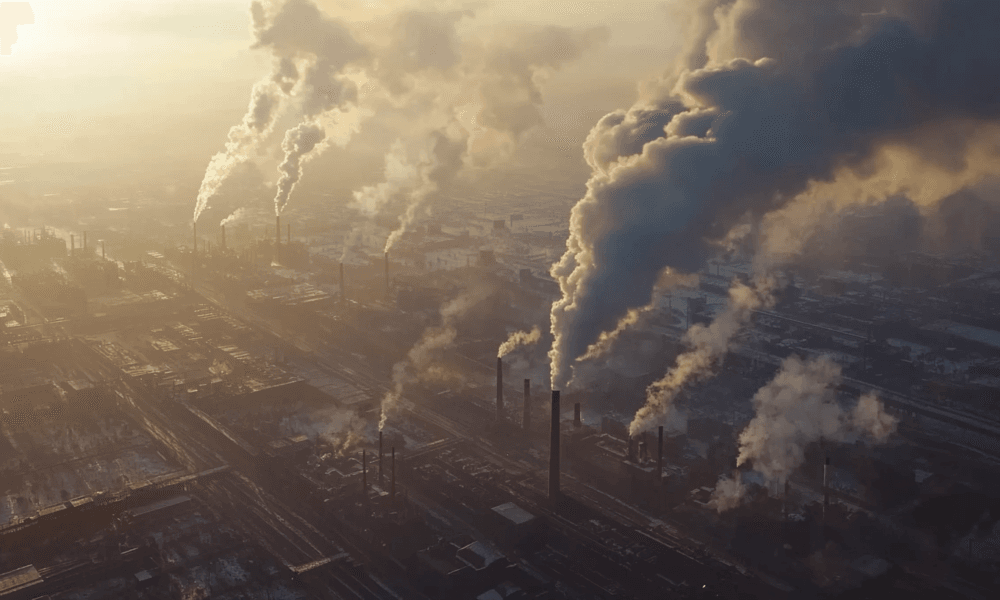Air Pollution in Urban Areas: Causes, Impact, and Solutions
Air pollution is a significant issue that affects millions of people living in urban areas worldwide. As cities grow, the concentration of vehicles, factories, and construction activities contributes to the increasing levels of pollutants in the air. Urban air pollution has become a pressing concern due to its negative effects on human health, the environment, and overall quality of life. In this article, we will analyze the causes of urban air pollution, its impact on health and the environment, and explore possible solutions to mitigate the problem, including the implementation of green spaces, emissions regulations, and public awareness campaigns.
Understanding the Causes of Urban Air Pollution
Urban air pollution is primarily caused by human activities that release harmful substances into the atmosphere. These pollutants come from a variety of sources and contribute to the degradation of air quality in cities. Below are some of the main causes of urban air pollution:
1. Vehicle Emissions
The rapid growth in the number of vehicles in urban areas is one of the leading causes of air pollution. Vehicle emissions contain a mix of pollutants, including carbon monoxide (CO), nitrogen oxides (NOx), particulate matter (PM), and volatile organic compounds (VOCs).
- Fossil Fuels: Vehicles that run on gasoline or diesel produce a significant amount of harmful gases. Traffic congestion in cities leads to increased idling times, which further contributes to air pollution.
- Diesel Particulates: Diesel engines produce higher amounts of particulate matter, which are tiny particles that can penetrate deep into the lungs and cause respiratory issues.
2. Industrial Emissions
Industrial activities are another major contributor to urban air pollution. Factories and power plants release pollutants, including sulfur dioxide (SO2), carbon dioxide (CO2), and heavy metals into the atmosphere.
- Manufacturing Plants: The production of goods in factories often involves burning fossil fuels, which releases a range of harmful pollutants. Industries located near urban areas contribute significantly to air quality degradation.
- Power Generation: Power plants that burn coal or natural gas to generate electricity are major sources of air pollution. The emissions from these plants contain pollutants that can have long-lasting effects on the environment.
3. Construction and Demolition Activities
Construction and demolition activities generate a considerable amount of dust and particulate matter. The dust from construction sites, cement mixing, and demolition work contributes to poor air quality in urban areas.
- Particulate Matter (PM): Construction dust is a significant source of PM10 and PM2.5, which are small enough to be inhaled and can cause respiratory and cardiovascular problems.
- Heavy Machinery: The use of heavy machinery and equipment that runs on diesel also contributes to emissions of harmful gases, further deteriorating urban air quality.
4. Household and Commercial Activities
Household activities such as cooking, heating, and using certain cleaning products can also contribute to air pollution. Commercial activities, including the use of air conditioners, generators, and other appliances, release pollutants into the atmosphere.
- Solid Fuels: In some urban areas, the use of solid fuels like coal or wood for cooking and heating produces pollutants such as carbon monoxide and particulate matter.
- VOCs: The use of cleaning products, paints, and solvents releases VOCs, which contribute to the formation of ground-level ozone, a harmful pollutant.
Impact of Urban Air Pollution
Air pollution in urban areas has a wide range of negative effects on both human health and the environment. Understanding the impact of air pollution can help emphasize the importance of taking action to reduce pollution levels.
1. Health Effects
The health effects of urban air pollution are significant and affect millions of people worldwide, particularly those living in densely populated areas.
- Respiratory Issues: Exposure to pollutants like particulate matter (PM2.5 and PM10) can lead to respiratory problems such as asthma, bronchitis, and other chronic lung conditions.
- Cardiovascular Diseases: Long-term exposure to air pollution is linked to an increased risk of heart attacks, stroke, and other cardiovascular diseases. Pollutants such as nitrogen dioxide (NO2) can cause inflammation of the blood vessels and increase the risk of cardiovascular problems.
- Vulnerable Populations: Children, the elderly, and individuals with preexisting health conditions are particularly vulnerable to the harmful effects of air pollution. Children exposed to air pollution are at risk of impaired lung development and other health issues.
2. Environmental Impact
Urban air pollution also has a significant impact on the environment, affecting not only the quality of the air but also other ecosystems.
- Acid Rain: Pollutants like sulfur dioxide (SO2) and nitrogen oxides (NOx) can combine with water vapor in the atmosphere to form acid rain, which damages buildings, soil, and water bodies.
- Reduced Visibility: High levels of particulate matter can lead to haze and reduced visibility in urban areas, affecting daily activities and making cities less attractive for residents and tourists.
- Climate Change: Emissions of greenhouse gases (GHGs), such as carbon dioxide and methane, contribute to global warming and climate change, which can lead to extreme weather events, rising sea levels, and other environmental challenges.
Solutions to Mitigate Urban Air Pollution
Addressing the issue of urban air pollution requires a multifaceted approach that involves government action, technological innovation, and public participation. Here are some effective solutions to mitigate air pollution in urban areas:
1. Green Spaces and Urban Forests
Green spaces and urban forests can play a crucial role in reducing air pollution by absorbing pollutants and improving air quality.
- Tree Planting: Trees and plants help filter the air by absorbing pollutants like carbon dioxide and particulate matter. Planting more trees in urban areas can significantly improve air quality and provide a healthier environment for residents.
- Parks and Green Roofs: Creating parks, green roofs, and community gardens not only helps reduce air pollution but also enhances the quality of life for city dwellers by providing spaces for recreation and relaxation.
2. Emissions Regulations and Clean Energy
Emissions regulations and the adoption of clean energy are essential for reducing the amount of pollutants released into the atmosphere.
- Vehicle Emissions Standards: Governments can implement stricter emissions standards for vehicles, promoting the use of cleaner fuels and encouraging the adoption of electric vehicles (EVs). Reducing the number of older, polluting vehicles on the road can lead to significant improvements in air quality.
- Renewable Energy: Transitioning from fossil fuels to renewable energy sources, such as solar and wind, can reduce the emissions produced by power generation. Encouraging the use of clean energy for households, industries, and transportation can help mitigate urban air pollution.
3. Promoting Public Transportation and Active Mobility
Public transportation and active mobility options, such as cycling and walking, can help reduce the number of vehicles on the road and decrease air pollution levels.
- Public Transit Systems: Investing in efficient and affordable public transit systems, such as buses, trams, and trains, can encourage people to leave their cars at home. Reducing the number of vehicles on the road can lead to lower emissions and better air quality.
- Cycling and Walking Infrastructure: Creating dedicated bike lanes and pedestrian paths can promote active modes of transportation, reducing traffic congestion and vehicle emissions.
4. Public Awareness Campaigns
Public awareness is key to encouraging individuals to take action to reduce air pollution and adopt more environmentally friendly behaviors.
- Education Programs: Governments and NGOs can implement education programs to raise awareness about the causes and effects of air pollution and promote actions that individuals can take to reduce their carbon footprint.
- Behavioral Changes: Encouraging people to reduce car use, limit energy consumption, and avoid burning waste can contribute to reducing air pollution levels in cities.
Conclusion
Air pollution in urban areas is a significant challenge that requires urgent action. The primary causes of urban air pollution include vehicle emissions, industrial activities, construction, and household activities, all of which release harmful pollutants into the atmosphere. The impact of air pollution on human health and the environment is profound, leading to respiratory problems, cardiovascular diseases, and environmental degradation.
Addressing urban air pollution requires a combination of solutions, including the creation of green spaces, the implementation of emissions regulations, the promotion of public transportation, and raising public awareness. By taking these steps, cities can improve air quality, protect public health, and create a more sustainable and livable environment for all residents.




No Comment! Be the first one.